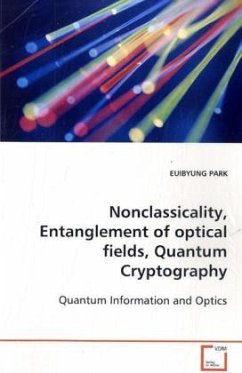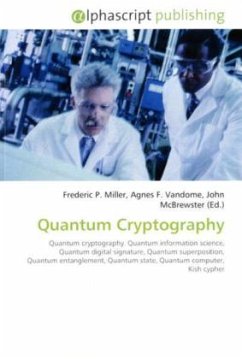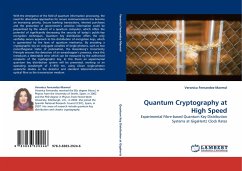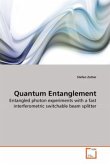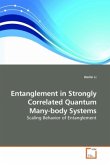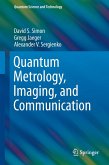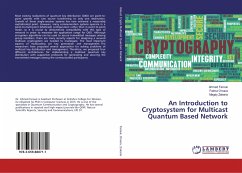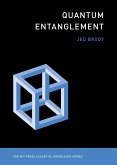This thesis examines the nonclassicality of quantum
theory, including entanglement, and its application
to quantum information, with special emphasis on
quantum cryptography. The various nonclassical
aspects of quantum theory, including their
application to quantum cryptographic protocol, are
studied in terms of their implementation using
quantum optics.
We first study the generation of two types of
nonclassical quantum state, a coherent-state
superposition and the non-Gaussian state obtained
through the addition or subtraction of a single
photon from a Gaussian field. In the work we examine
several nonclassical properties, for example, quantum
nonlocality, tested using Bell inequalities, quantum
teleportation, negativity of Wigner function, etc.
Secondly, we examine the problem of spring-like
coupling between bosons in an open chain
configuration. This allows us to include the effects
of the counter-rotating terms in the long-haul
entanglement distribution.
Finally, we provide one example of an application of
quantum theory to the area of quantum information,
more specifically to the field of quantum cryptography.
theory, including entanglement, and its application
to quantum information, with special emphasis on
quantum cryptography. The various nonclassical
aspects of quantum theory, including their
application to quantum cryptographic protocol, are
studied in terms of their implementation using
quantum optics.
We first study the generation of two types of
nonclassical quantum state, a coherent-state
superposition and the non-Gaussian state obtained
through the addition or subtraction of a single
photon from a Gaussian field. In the work we examine
several nonclassical properties, for example, quantum
nonlocality, tested using Bell inequalities, quantum
teleportation, negativity of Wigner function, etc.
Secondly, we examine the problem of spring-like
coupling between bosons in an open chain
configuration. This allows us to include the effects
of the counter-rotating terms in the long-haul
entanglement distribution.
Finally, we provide one example of an application of
quantum theory to the area of quantum information,
more specifically to the field of quantum cryptography.

